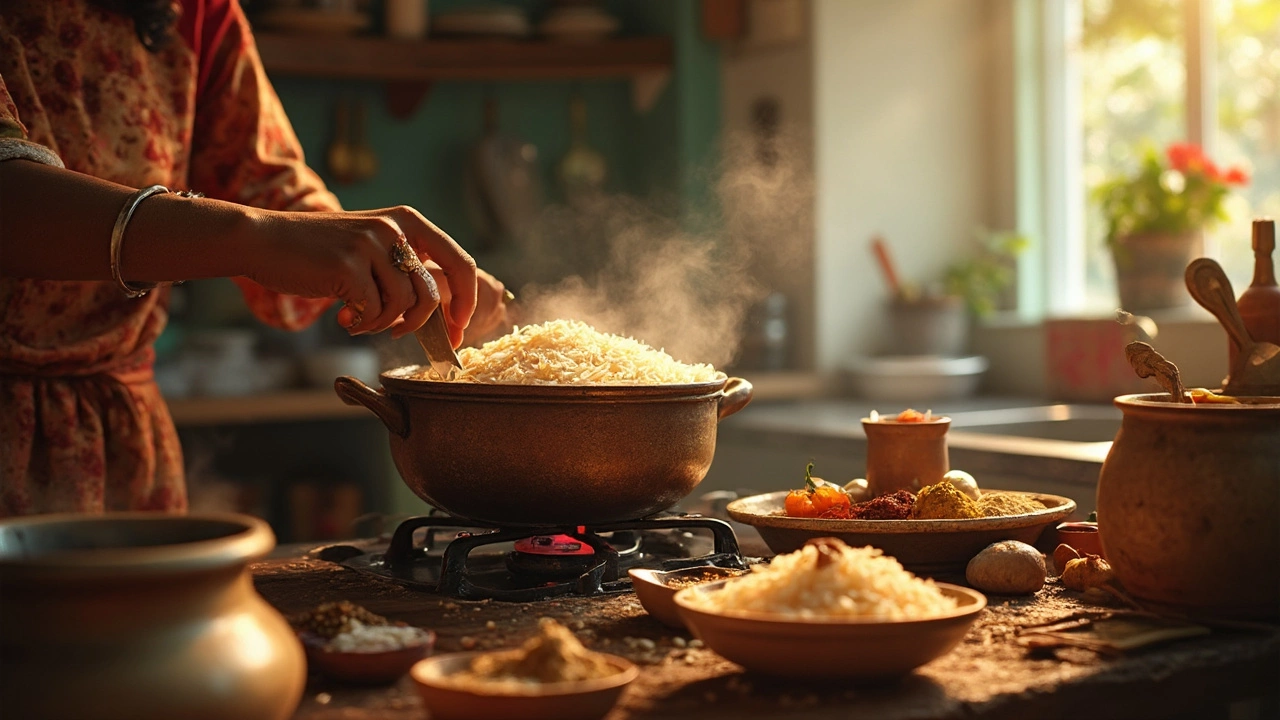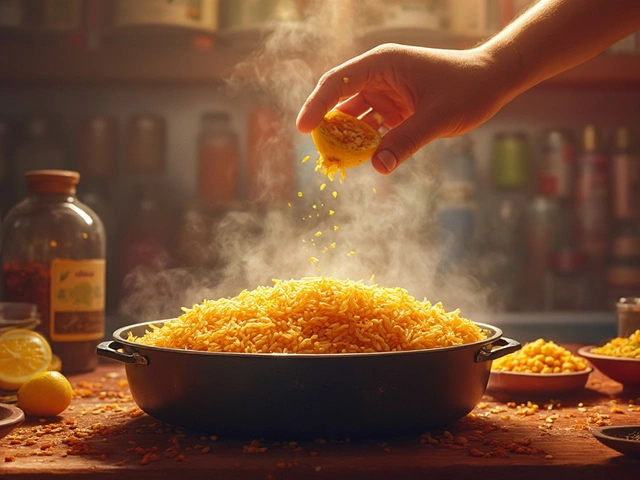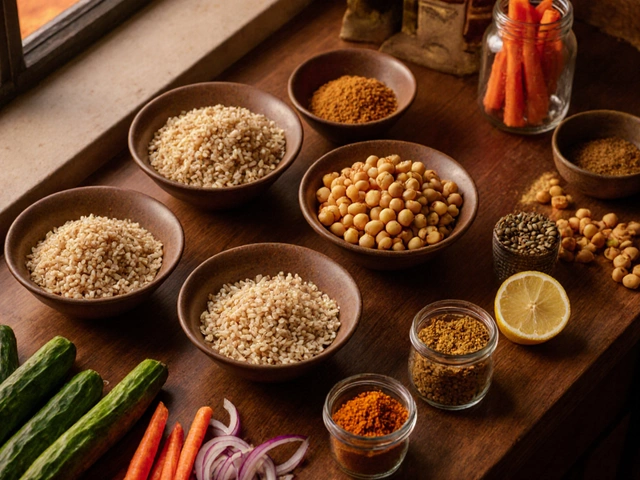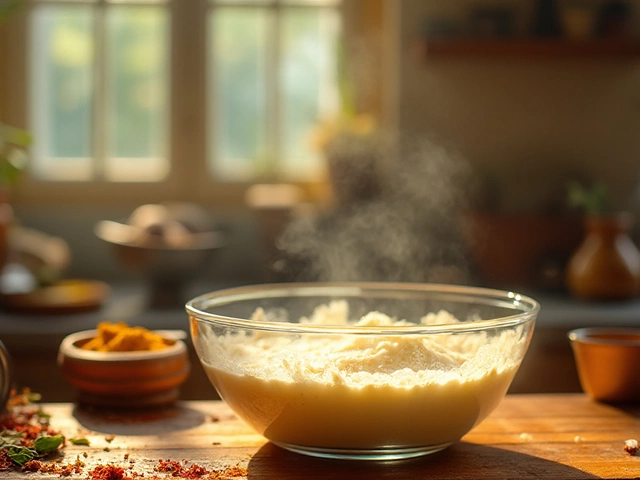Just a minute too long in boiling water, and your biryani can go from dreamy to disastrous. Nailing the perfect rice texture for biryani is more science than guesswork. The goal? Grains that are only 70% cooked—not soft, not mushy, and definitely not sticking together.
If you ever wondered why restaurant biryani feels so light and fluffy, it’s all about how the rice is boiled. Timing is everything, but so are things like soaking and the amount of water. There’s a sweet spot, and hitting it gives you that famous biryani feel—each grain standing tall on its own, soaking up flavor without losing bite.
- Why Rice Texture Matters in Biryani
- Choosing the Right Rice and Prep
- Boiling: The Real Timing Trick
- Draining and Resting: Don’t Skip This
- Troubleshooting & Pro Tips
Why Rice Texture Matters in Biryani
Ask any biryani fan, and they’ll say the texture of rice can make or break the dish. It’s not just about taste—getting the boil rice for biryani part right changes the entire experience at the table. Fluffy, individual grains are key for biryani because the rice needs to layer and mingle with all those spices, not clump into a paste.
If the rice is overboiled, it becomes soft or sticky. That means when you finish cooking the biryani (usually with steam, or ‘dum’), the rice only gets mushier. Underboiled rice is just as bad, because hard centers ruin the whole texture and don’t soak up flavor properly.
Biryani rice should be boiled to about 70% doneness. In plain numbers, what you want is for the grain’s outside to look cooked but the center to be slightly firm when you press it—or bite it, if you want to check directly. Here’s a quick side-by-side on how texture affects biryani:
| Rice Texture | End Result in Biryani |
|---|---|
| Undercooked | Hard, doesn’t absorb flavors, crunchy in the mouth |
| Perfectly Parboiled | Separate grains, soaks flavor, holds shape |
| Overcooked | Mushy, clumped rice, blends into a paste |
When you’re following any biryani recipe, pay extra attention to boiling time. Getting the texture right is what brings you restaurant-style results at home, even if you’re working in a tiny kitchen with just one pot.
Choosing the Right Rice and Prep
For top-notch biryani, you can’t just grab any old rice from the pantry. Always go for basmati rice. Long-grain basmati makes all the difference. The grains stay separate, don’t get sticky, and soak up flavor without turning to mush. Aged basmati is even better; it smells amazing and keeps its shape during boiling.
Prepping your rice is more than rinsing and tossing it in a pot. Give it a good rinse—at least three times—until the water runs mostly clear. This washes off excess starch and goes a long way in preventing gluey rice. Some cooks even measure the cloudiness for extra accuracy. After rinsing, soak the rice. Yes, really. Let it sit in plenty of cold water for 20-30 minutes. Soaking shortens your boiling time and helps the grains stretch long, just how you want them.
- Pick high-quality, aged basmati rice.
- Rinse thoroughly to remove excess starch.
- Soak for 20-30 minutes to prep the grains for the pot.
Curious how soaking affects things? Check this out:
| Step | Practical Reason |
|---|---|
| Rinsing | Avoids sticky rice by getting rid of free starch |
| Soaking | Makes grains expand for light, fluffy biryani |
This prep step isn’t for show—it’s a game changer for getting perfect boil rice for biryani on your first try. Cutting corners here makes mushy rice a lot more likely. Stick to these routines, and you set yourself up for way better biryani every single time.
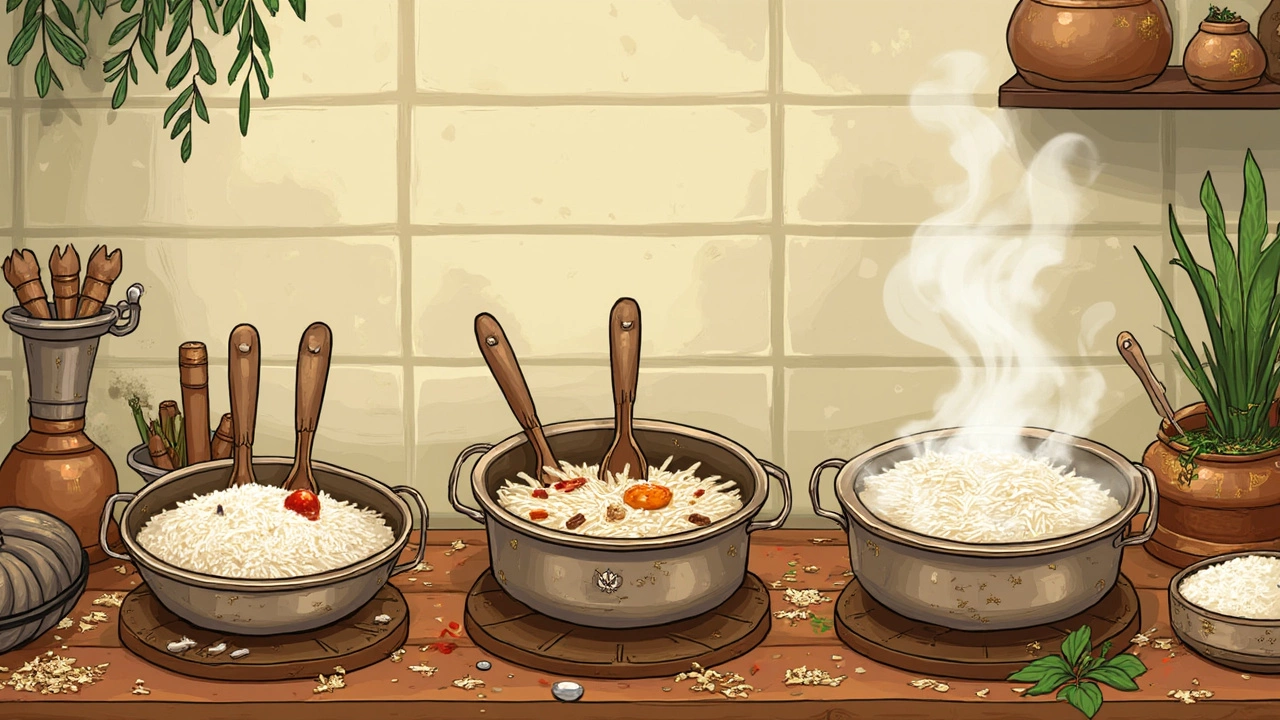
Boiling: The Real Timing Trick
Getting the rice right for boil rice for biryani is half the battle won. Rule number one: don’t trust the bag instructions. Biryani rice needs to be parboiled, not fully cooked. Here’s how you do it.
- Start with a big pot of water—think pasta style, not just enough to cover the rice. Add salt like you would for cooking pasta; the rice should taste faintly salty.
- Always use soaked rice. Basmati is the best pick, and after soaking 20-30 minutes, it cooks much more evenly and quickly.
- Once your water is at a full rolling boil, toss in the soaked, drained rice. Give it a gentle stir so nothing clumps.
The magic timing window? For most basmati brands used for biryani recipe, 5-7 minutes is what you’re aiming for. Start checking at 5 minutes. What should you look for? Take a few grains: bite one—there should be a slight white dot in the center (that’s the uncooked bit you want). If the grain breaks with a little snap, it’s ready. Don’t wait for it to get soft—it’s going to steam more in the final biryani stage.
| Basmati Rice Soaking | Boiling Time | Texture Needed |
|---|---|---|
| 20–30 min | 5–7 min | 70% cooked, grain with a tiny white center |
If you see grains starting to fray or burst, stop right there—strain the rice fast. The biggest mistake? Walking away for ‘just a second.’ Rice for biryani goes from perfect to overcooked in a flash.
Another tip: If you’re boiling a huge batch, boil in smaller lots. Big quantities mean uneven cooking, and for biryani rice timing, evenness is everything. Rinse the rice quickly with cold water right after draining to halt the cooking, especially if you know you overshot the timing a little.
Draining and Resting: Don’t Skip This
Here’s the part most folks rush—draining and letting rice rest. Even if you’ve nailed the boil rice for biryani timing, skipping this step is a recipe for sticky, overcooked rice.
As soon as your rice grains hit that magic 70% cooked mark, turn off the heat and drain immediately. Don’t let them sit in hot water—those extra seconds can soak up more and tip your rice into soggy territory. Use a large sieve or colander so the water drains out fast. Give the rice a gentle shake to get rid of excess moisture.
But don’t bundle the rice straight into your biryani layers yet. Piling up freshly boiled grains means trapped steam, and that’s how you end up with lumpy, clumped rice. Spread the drained rice on a tray or a wide plate in a thin layer. This lets the steam escape and halts any extra cooking from leftover heat.
Resting isn’t just kitchen superstition—restaurants do this, and for good reason. Allowing the basmati rice boiling process to finish in open air firms up the grains. Five to ten minutes is all you need. It also stops the rice from sticking together when you mix it with masala and other biryani layers later on.
- Drain rice immediately after boiling (never let it sit in water).
- Spread rice out for even cooling and steam release.
- Rest for 5-10 minutes before handling or layering into biryani.
Some cooks like to sprinkle a few drops of ghee or oil while the rice cools. This coats the grains and makes it even less likely they'll clump up. Try it out—even a small tweak like this can level up your biryani rice timing game big time.
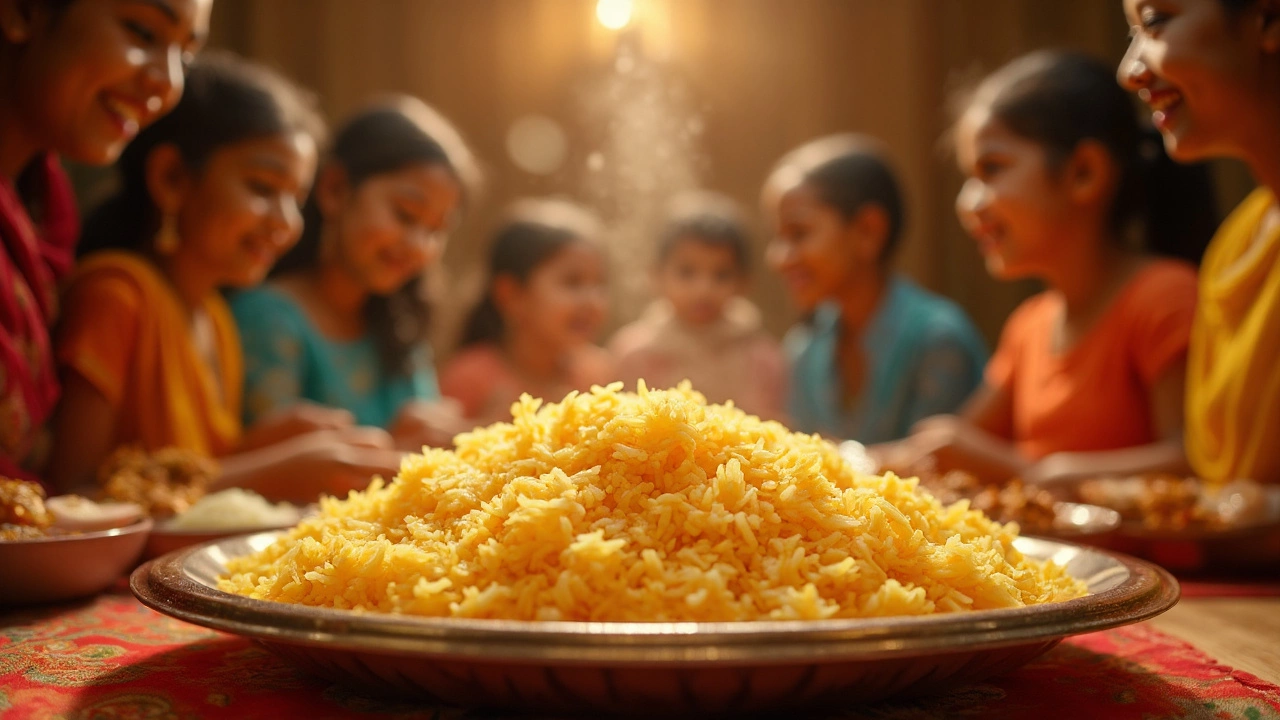
Troubleshooting & Pro Tips
Messed up the boil rice for biryani timing? You’re not alone. Even seasoned cooks overcook or undercook their biryani rice sometimes. Let’s sort out the usual problems and arm you with solid hacks.
- Rice turned mushy? Immediately drain it. Spread the rice on a flat plate or tray to cool. This stops cooking fast. If it’s only slightly overcooked, layer it at the bottom and put firmer rice on top when assembling your biryani. The steam balances things out during the final cook.
- Rice too firm? Don’t panic! Sprinkle a little water while layering the rice and masala, then seal your pot tight. Dum cooking (slow steaming) helps finish off those stubborn grains.
- Clumpy rice? This usually means not enough water or no pre-soaking. Next time, soak your basmati rice for at least 30 minutes, and make sure you use a big pot with lots of boiling water—think pasta-style, not risotto style.
- Worried about sticky rice? A tablespoon of oil or ghee in the boiling water makes a huge difference. It coats the grains and keeps them separate.
- Can’t tell if the rice is 70% done? Here’s a quick trick: bite a grain. It should break easily but have a tiny, chalky core in the middle. Another tip: if you can press the grain between your fingers and it splits evenly, you’re good.
Most people use a 1:10 rice-to-water ratio for boiling (e.g., 1 cup of rice to 10 cups of water). Here’s a quick guide to timing, based on real kitchen tests:
| Rice Soaking Time | Boiling Time (at full boil) |
|---|---|
| 15 minutes | 6-7 minutes |
| 30 minutes | 5-6 minutes |
| Not soaked | 8-10 minutes |
Always taste-test in the last minute. Water hardness or rice age can mess with timing, so trust your senses over the clock. And remember, the best biryani rice timing comes from watching and tasting, not just counting minutes.





